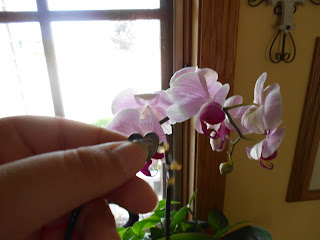Adaptation of an animal: (Labrador retriever) inherited characteristics of an animal that enhances its survival and reproduction in specific environments. Labrador retrievers were bred in the northern regions of Canada, specifically Labrador, to aid fishermen. As a result labrador retrievers developed webbing between their claws to assist with swimming, as shown here.
Cuticle layer of a plant: (potted plant) a waxy covering on the surface of stems and leaves which provides support for underlying tissues and protects the plant from UV radiation and desiccation.
Anther and filament of a stamen: (yellow flower) the stamen of a flower is the pollen-producing reproduction organ, consisting of the anther and filament, the multiple little sticks sprouting around the center of the flower. The anther is the round tip on the end of the filament, where the pollen of the flower forms and is eventually released. The filament is the stalk of the stamen.
Auxin producing area of a plant: (sprouting plant) a natural plant hormone which stimulates cell elongation, fruit growth and overall plant growth. Auxin occurs where a plant is creating new growth, as pictured here, a new orange bud.
CAM plant: (orchid) a plant that uses crassulacean acid metabolism, an adaptation of photosynthesis in arid conditions, where carbon dioxide enters stomata during the night to be converted to organic molecules, releasing CO during the day to continue the Calvin cycle.






No comments:
Post a Comment
Note: Only a member of this blog may post a comment.